Turbopropfan engine NK-93: useless unique
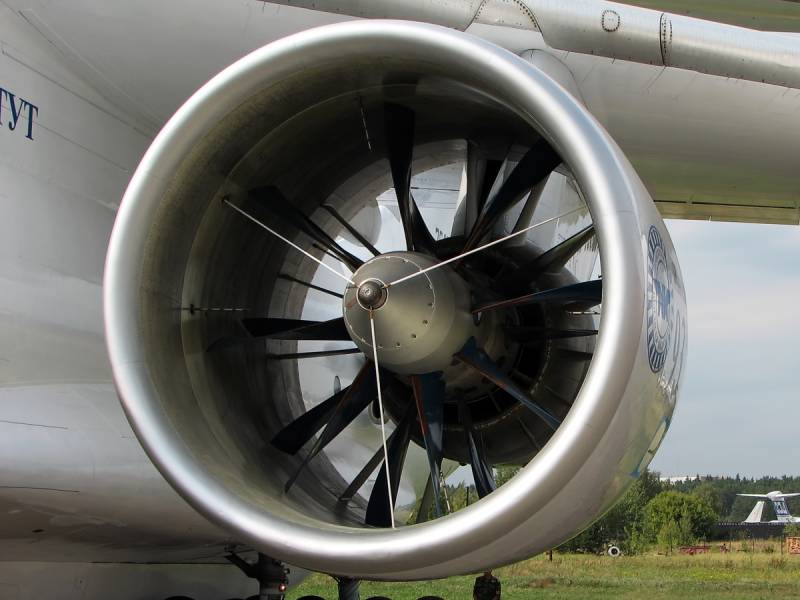
NK-93
Thirst for kerosene
For a start stories about the unique NK-93 turboprop aircraft engine, it is necessary to figure out how this design differs from other products. Moreover, the full name of the engine also contains the phrase "birotative propfan". Without preliminary preparation, one cannot understand why such a machine as the NK-93 was built at all.
In aircraft engine building, all design thoughts revolve around two categories - economy and cruising speed. Of course, safety, reliability, noise effect, and weight and size parameters of products are also important. But we have already learned to deal with this more or less well, and we can no longer expect serious progress.
But with fuel consumption, you can still think of something. The most economical are turboprop engines, which create the lion's share of thrust due to the propeller. The king of all engines of this type, of course, is the domestic NK-12, which is installed mainly on the Tu-95 strategic missile carrier. It is the most powerful and most economical turboprop in the world. aviation engine. It can also be found under the wing of the An-22 Antey military transport.
The parameters of two Tu-95 and Tu-160 similar in tasks speak of how economically more profitable a turboprop engine is (if we can talk about military equipment at all) than a turbojet engine. The first, with a practical range of 13,5 thousand kilometers, takes on board about 80 tons of fuel, and the Tu-160 is forced to take off with 148 tons of kerosene and at the same time fly 12,3 thousand km. But the main disadvantage of the NK-12 lies in its relative low speed - even the world's fastest serial turboprop Tu-95 does not accelerate more than 900 km / h.
It's all about a sharp decrease in propeller thrust when reaching supersonic speeds. The same effect, called the "locking effect", put an end to the further increase in helicopter flight speeds - further progress is possible only with the use of pushing propellers. The problem can be partially solved by increasing the diameter of the screws, but everything is possible within reasonable limits. The Tu-95 has an AB-60 propeller with a diameter of 5,6 meters, and the AV-90 propeller of the Antey military transport is already 6,2 meters. And everyone knows what kind of noise these machines create on takeoff - even for military equipment, such an effect is at the limit of what is permitted.
But do not assume that the topic of turboprop engines for aviation is on the verge of closing - the modern military transport A400M is equipped with four Europrop International TP400-D6, which manufacturers call the second most powerful in the world after the Russian NK-12. Therefore, we will see open propellers under the wings of all types of aircraft for a long time to come.
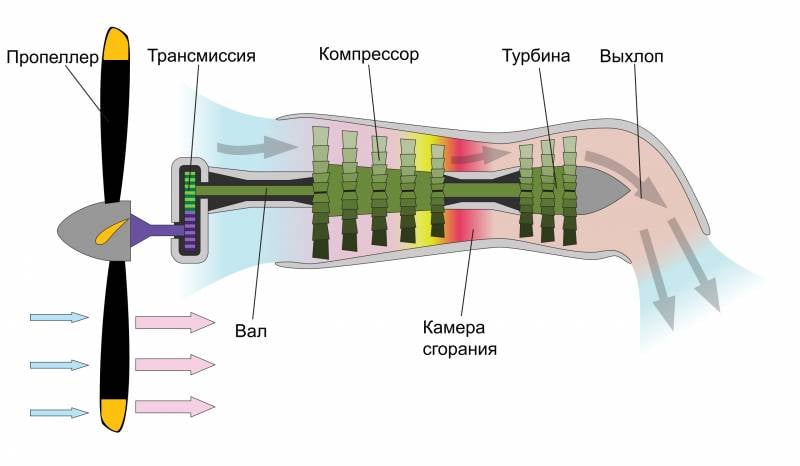
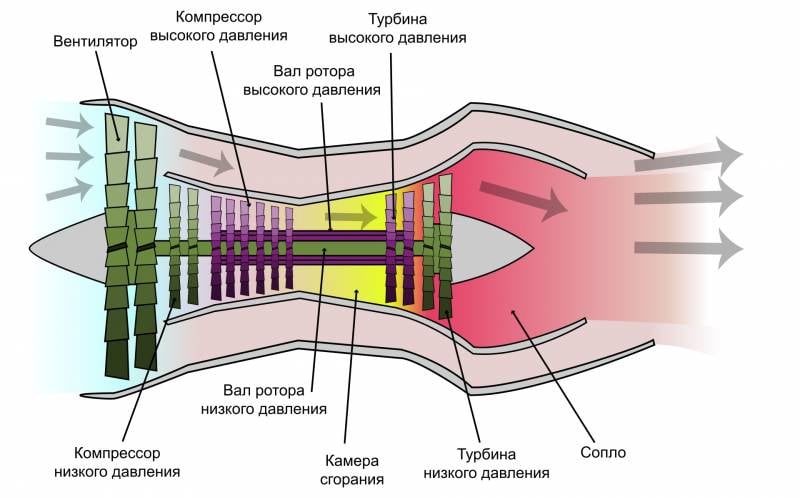
Schematic diagram of a turboprop (above) and turbofan aircraft engines.
In a situation where speed is critical, it is necessary to install turbojet aircraft engines. The principle of operation is simple - in the combustion chamber, the fuel mixed with air does useful work and transfers rotation to the compressor through the turbine blades. The latter pumps more air for the combustion chamber. Such motors are capable of accelerating carriers to several speeds of sound, but the fuel consumption of the products is simply out of the question. This is when compared with turboprop classmates.
To reduce fuel consumption, turbofan aircraft engines were invented. With a big stretch, the design can be called a hybrid of a turbojet and a turboprop engine. The turbofan creates thrust not only due to the outflow of a hot gas jet from the nozzle, but also due to the rotation of the fan in the head of the engine. A characteristic feature of engines of this scheme is their large size - the most powerful General Electric GE9X turbofan in the world has an air intake diameter of 4,5 meters.
To simplify it completely, the propeller of such engines is turned into a fan and hooded into a streamlined body to avoid complications during supersonic rotation of the blades. It also turned out to be quieter, which is important for civil aviation.
Most of the aircraft engines developed in Russia are of the turbofan type - PD-8, PD-18 and PD-35. It is important to understand here that the efficiency of any turbofan directly depends on the bypass ratio. That is, from the ratio of the mass of air that the fan blows through the external circuit (the air does not burn here) to the mass of air that burns in the internal hot circuit.
For example, the supersonic AL-31F for the Su-27 has a miserable bypass ratio of 0,59, while the purely civilian Pratt & Whitney PW1000G has a record 12. The first one has 0,59 kg of air for every kilogram of air passing through the hot zone, passing along the outer contour. In PW1000G, the opposite is true - for every kilogram of air passing through the combustion chamber, 12 kilograms are immediately blown by the fan along the outer contour.
Now, in the global aviation engine building, the boundary between a turbojet and a turbofan product has actually been erased - designs can only be distinguished by the degree of bypass. Let's conditionally say that all engines with a bypass ratio of more than two units can be safely called turbofans. And the more a turbofan looks like a turboprop, the greater its efficiency. But the frontal resistance inevitably increases, and with it the speed also decreases.
Actually, designers around the world are now fighting around the balance of these parameters. This is a kind of mainstream aircraft engine building.
Propfan
Despite the established market structure, engineers do not stop experimenting. What happens if the balance of a turbofan engine is shifted closer to a turboprop? It will turn out a propfan design, with which everything is very difficult. Even outwardly it is not easy to distinguish a conventional turboprop from a turboprop. Here, for example, D-27 from the Zaporizhzhya Design Bureau "Progress". And next to it is the European Europrop International TP400-D6 mentioned above from the A-400M truck.
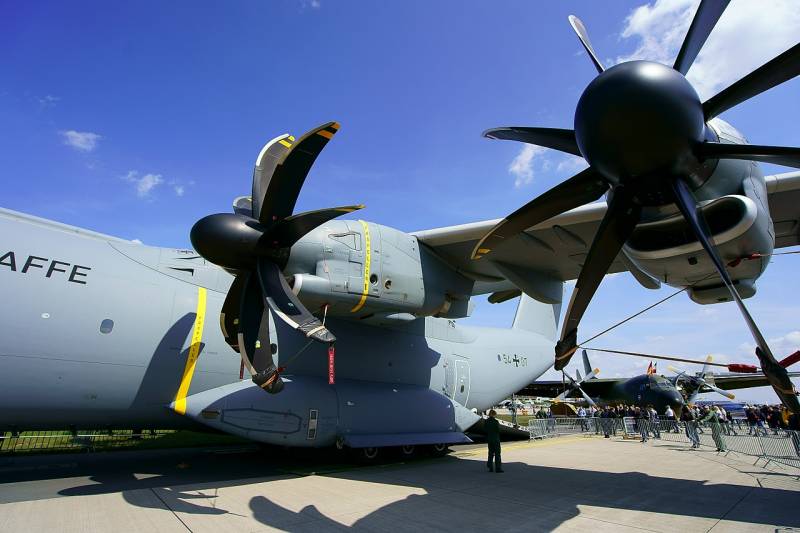
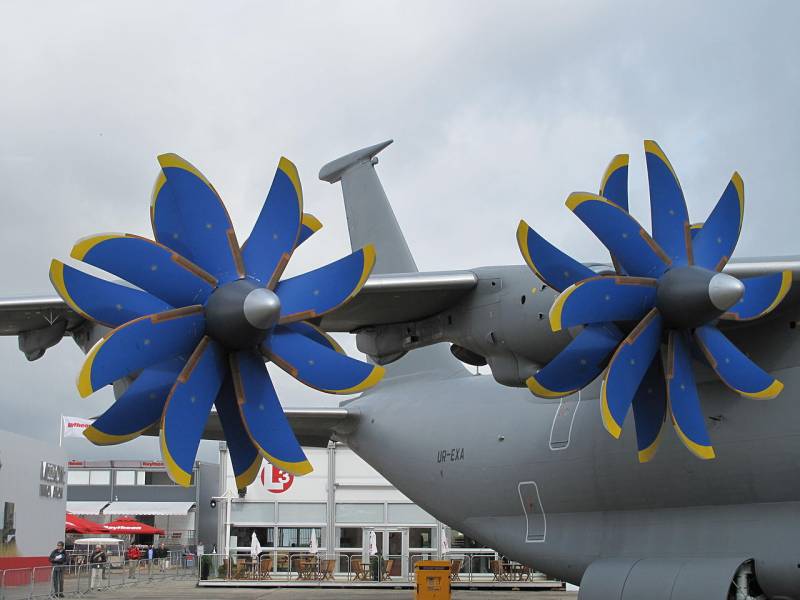
Aircraft engines TP400-D6 (above) and D-27, respectively, of the A-400M and An-70 aircraft.
It would seem that the differences, if any, are minimal. But do not confuse, Ukrainian (more precisely, still Soviet) refers to turboprops, and the multinational TP-400-D6 refers to turboprops. The difference is in the shape of the propeller blades.
The theory says: a propeller can be considered a propfan only when it has from 8 to 20 blades, and they themselves are very similar to sabers, that is, "with a variable sweep of the leading and trailing edges along the blade span." A large number of blades and shape allows you to achieve flight speeds of 800-900 km / h without the notorious "locking effect", which was discussed above.
Firstly, more blades allow you to reduce peripheral speed with the same thrust, and secondly, the saber-shaped blades improve streamlining at high flight speeds. Speaking in very dry terms, then the DT-27 has the highest possible efficiency of an air engine so far - more than 0,9.
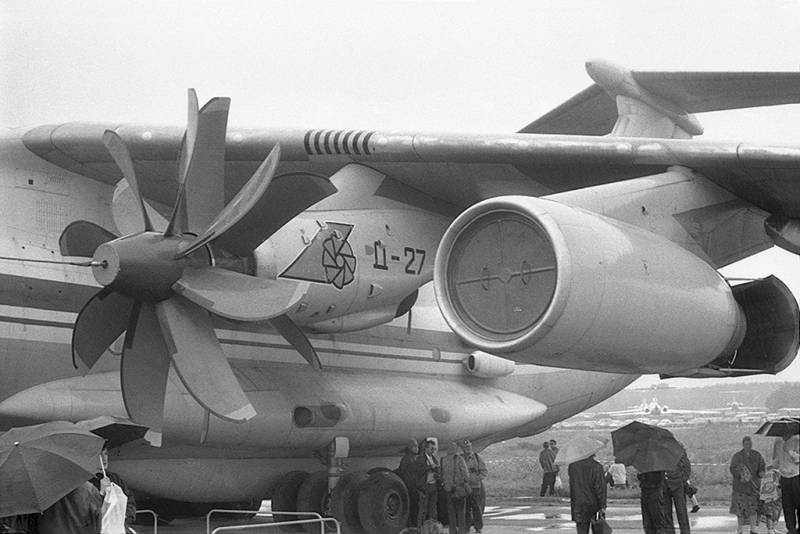
1993 D-27 under the wing of Il-76LL.
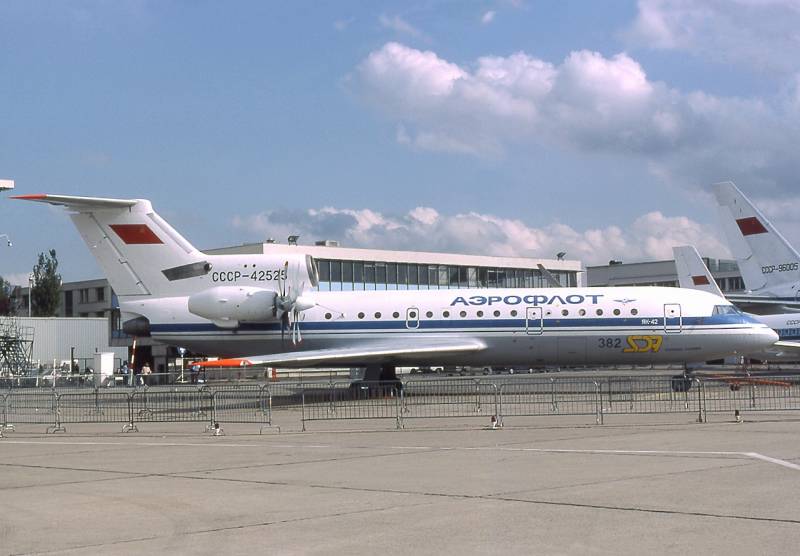
D-236 installed on the Yak-42LL flying laboratory
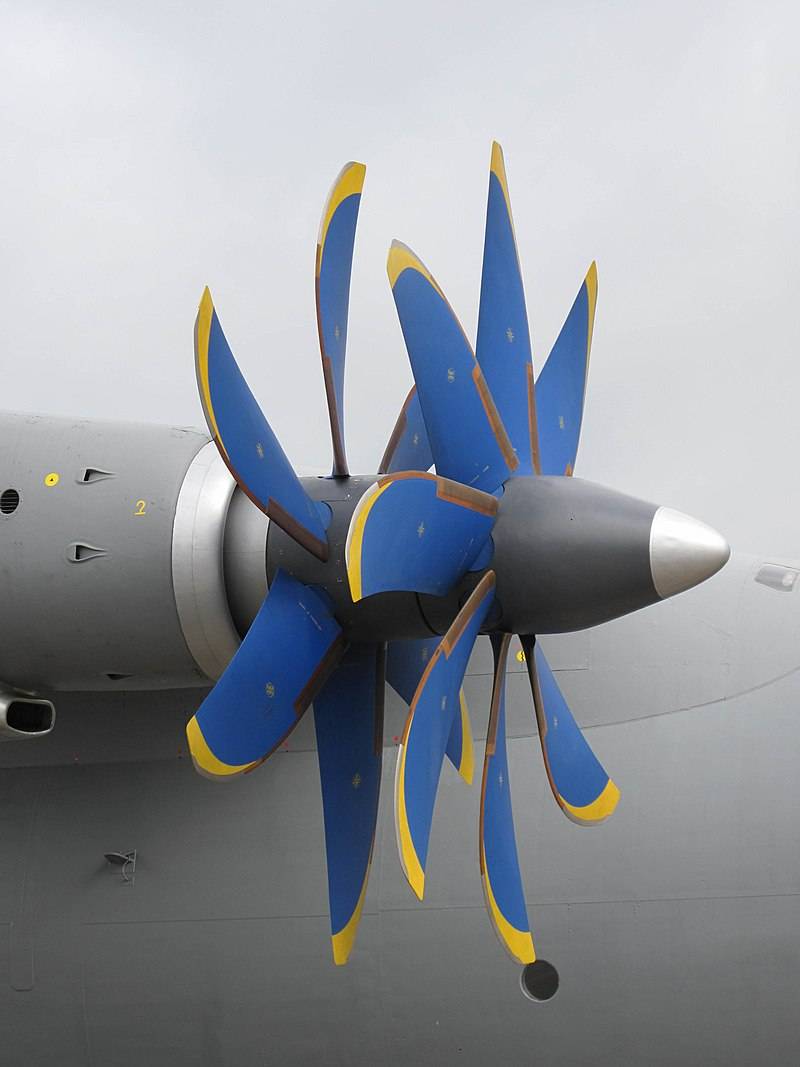
The number and characteristic shape of air propfans D-27 allows the unit to reach a new level of efficiency
At the same time, fuel consumption is comparable to that of a turboprop engine, that is, much lower than that of a turbofan. For DT-27, the specific fuel consumption in cruising mode was no more than 0,13 kg / hp / h, and for the world's most economical turboprop Europrop International TP400-D6 and NK-12 - about 0,16.
By the way, if not for the Maidan of 2014, then An-70 transport aircraft equipped with four propfan DT-27s would have been flying in the Russian sky for a long time. In the spring of 2013, they announced successful bench tests of the SV-27 propfan, and Zurabov, the ambassador to Ukraine, promised to purchase up to 60 aircraft for the Russian military department.
It is worth pointing out this fact separately - ten years ago, Russian certification authorities actually approved the admission of an innovative aircraft engine to flights. We will return to this fact.
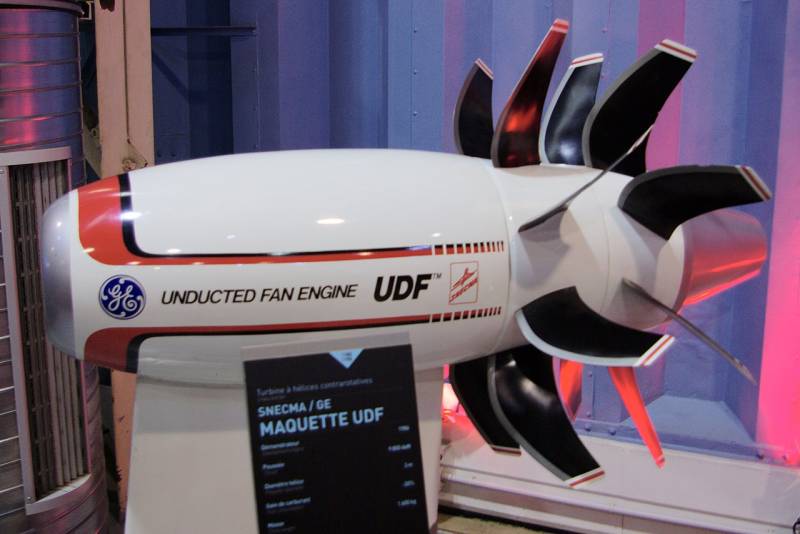
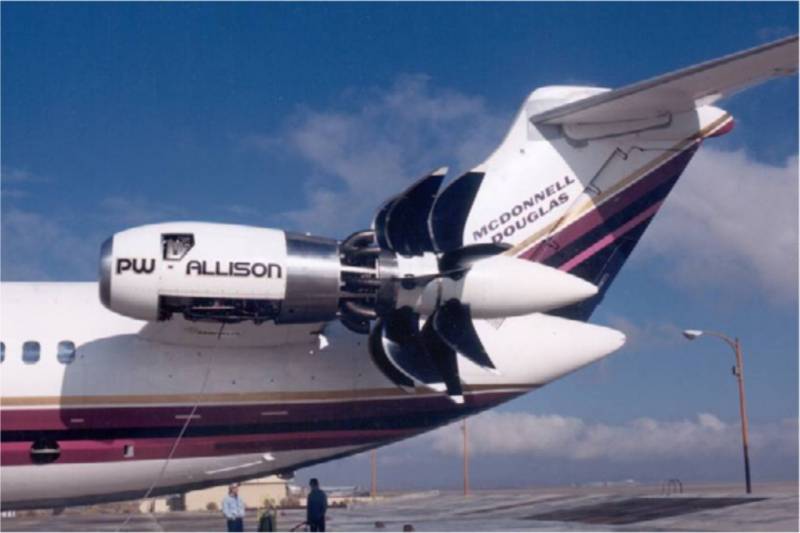
Experimental propfan General Electric GE36 (above) and PW-Allison 578-DX.
In total, three schemes of propfan motors are known - with a pulling and pushing propulsion unit, as well as with a hooded one. DT-27 and its experimental predecessor D-236. In the mid-80s, the Americans successfully experimented with the pusher circuit on the PW-Allison 578-DX and General Electric GE36 technology demonstrators. Both Soviet and American engines were equipped with two propfans placed one behind the other and rotating in different directions. This is the "birotative propfan" layout.
Products from PW and GE turned out nice - specific consumption fell by 20 percent compared to peers. But by the end of the 80s, conditions that were not favorable for engines of this type developed - tightening noise requirements and low oil prices. And the experimental PW-Allison 578-DX and General Electric GE36 engines made a lot of noise. Moreover, the decibels went off scale in the cabin, despite the fact that the designers carried the engine to the tail, and even deployed it under the pushing screw.
As a result, the Americans dismissed the projects. From time to time, interest in propfans wakes up with rising prices for kerosene, but this should not be expected in the near future. Safran is now seriously working on an open-rotor turbofan engine - in 2017, preliminary tests of the concept were completed. CFM International has also struggled with its 12-blade prototype "environmentally friendly" aircraft engine.
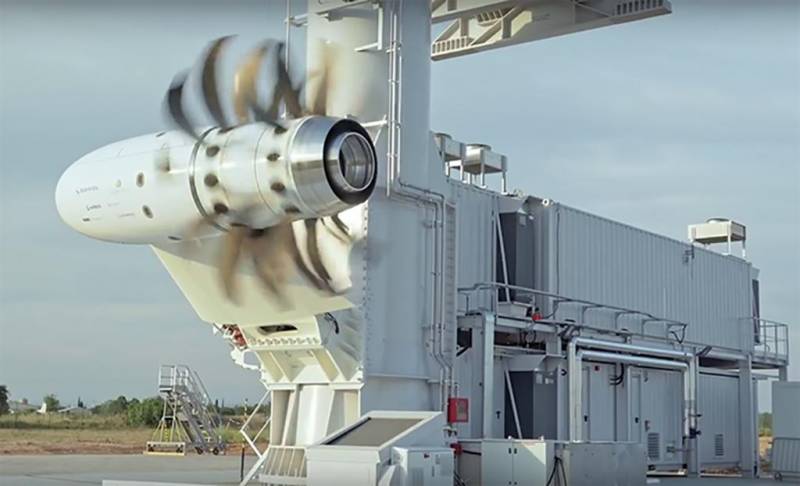
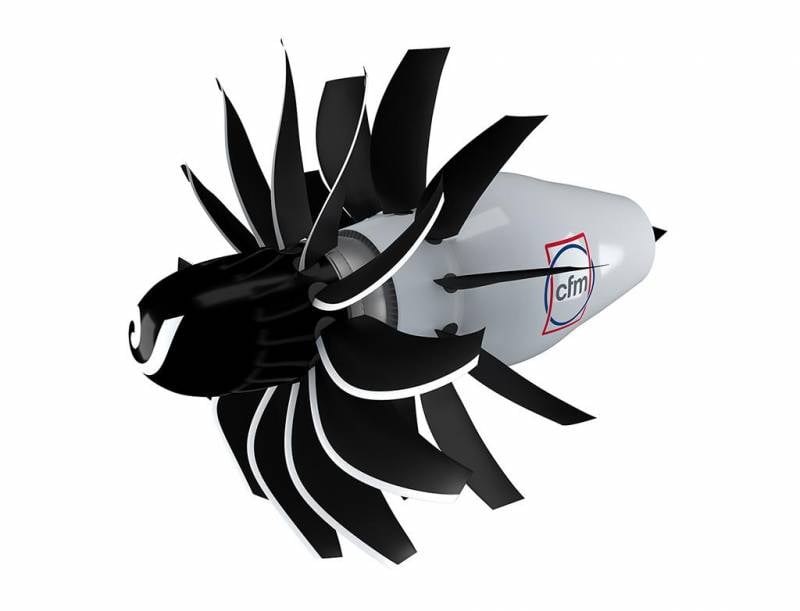
Modern propfan aircraft engines with an open thruster of the pusher type. Top by Safran, below by CFM International
Now it's time to move on to the main character of our story - the NK-93 birotational turboprop-fan aircraft engine.
The main difference from all the above schemes is the hooded propfan. The front propeller has eight blades, the second has ten, and they are driven by a separate shaft from a planetary gearbox with seven satellites. Work on the NK-93 began in the Samara NTK im. Kuznetsov in the late 80s, and it was intended for the heavy military transport Il-106.
The aircraft was supposed to replace the outdated An-22 Antey even for that time. The thrust of the engine is 18 tons - about the same amount is now being developed at the stand by the still pre-production turbofan PD-18. Only the specific fuel consumption of the Permian engine is about 0,55 kg/ehp/h, while that of the NK-93 is 0,22.
The designers managed to significantly reduce the noise level inherent in all propfans, primarily due to the cowling. In any case, it is lower than that of the Ukrainian counterpart D-27, which was approved for flights in Russia in 2013.

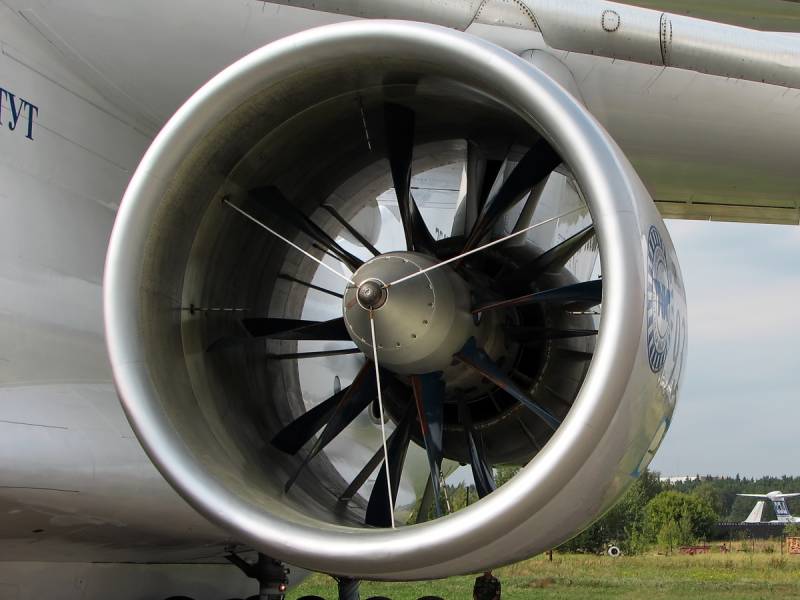
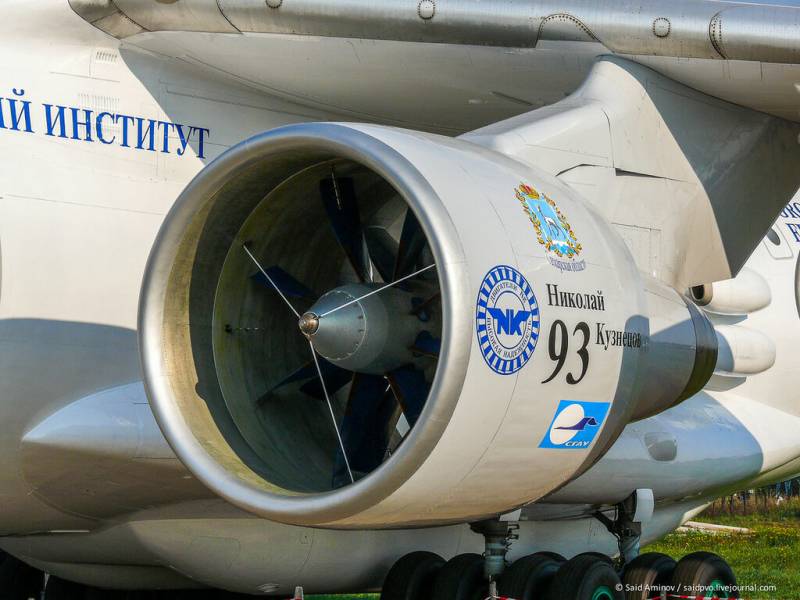
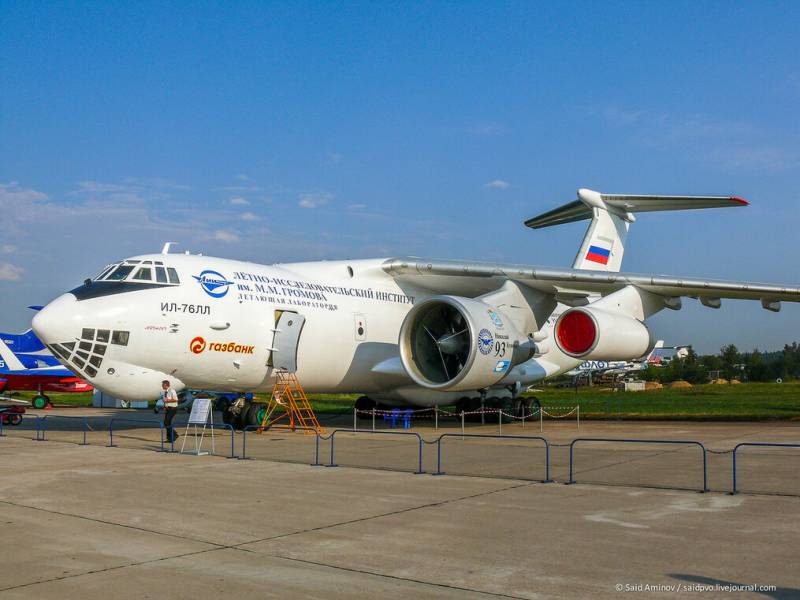
NK-93 under the wing of Il-76LL at the MAKS-2007 air show. Source: sell-off.livejournal.com
The NK-93 has some solid pluses - the bypass ratio is 16,6, which is why the turbine accounts for only 17 percent of the thrust, the rest for propfans. Despite the unborn IL-106, work on the engine continued in Samara on its own initiative.
From 2006 to 2008, the Il-76LL test laboratory took off five times with an experimental engine under the wing. It was assumed that a pair of engines would be under the wing of the Tu-204 and transport Tu-303. Four NK-93s were planned for the Il-96 airliner and even for the super-heavy An-124. For the latter, it was planned to develop a version with a thrust of 22-24 tons. But not a single customer showed interest in a largely revolutionary design.
Of course, there were also disadvantages. For example, an almost three-meter diameter air intake. This, of course, will create layout difficulties for designers, but they are not critical - aircraft with even larger engines fly in the world. This was mentioned above.
The civilian developers of the MS-21 and CR929 were simply frightened by the innovative NK-93. They can be understood - cars are guided by the world market, which is very conservative.
As a result, a series of PD-8, PD-10, PD-14 and PD-35 are being developed from scratch, for which this same market will also be closed in the near future.
Could the NK-93 have been adapted and scaled up in the time lost and the billions spent? Why was the Ukrainian D-27 actually allowed to operate in Russia at one time, but a similar, albeit more powerful domestic NK-93, was not? The next rhetorical questions, the answers to which, if we find out, will not be soon.
Information